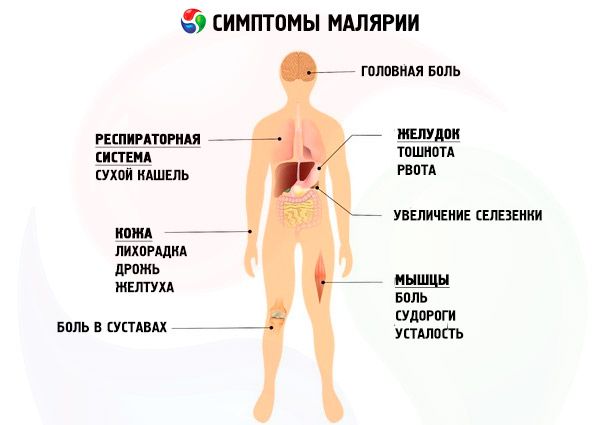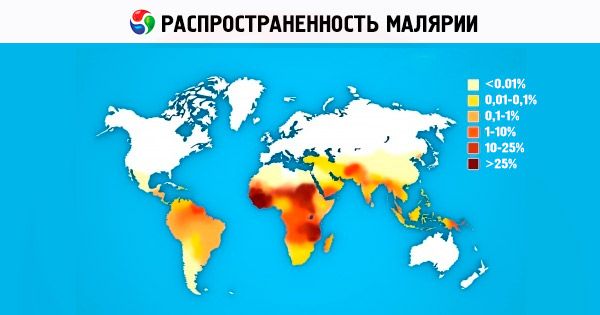Medical expert of the article
New publications
Malaria in children
Last reviewed: 04.07.2025

All iLive content is medically reviewed or fact checked to ensure as much factual accuracy as possible.
We have strict sourcing guidelines and only link to reputable media sites, academic research institutions and, whenever possible, medically peer reviewed studies. Note that the numbers in parentheses ([1], [2], etc.) are clickable links to these studies.
If you feel that any of our content is inaccurate, out-of-date, or otherwise questionable, please select it and press Ctrl + Enter.
Causes malaria in a child
The causative agent of malaria - malarial plasmodium - belongs to the type of protozoa, class of sporozoa, order of bloodspores, family of plasmodia, genus of plasmodia. Four types of human malaria pathogens have been identified:
- P. malariae, which causes quartan malaria;
- P. vivax, which causes tertian malaria;
- P. falciparum, the causative agent of tropical malaria;
- P. ovale, which causes malaria in tropical Africa of the three-day type.
Pathogenesis
Attacks of malaria are caused by the erythrocytic phase of development of malarial plasmodia. The onset of an attack can be associated with the disintegration of infected erythrocytes and the release of merozoites, free hemoglobin, parasite metabolic products, erythrocyte fragments with pyrogenic substances, etc. into the bloodstream. Being foreign to the body, they, by affecting the thermoregulation center, cause a pyrogenic reaction and also act generally toxic. In response to the circulation of pathogenic substances in the blood, hyperplasia of the reticuloendothelial and lymphoid elements of the liver and spleen occurs, as well as sensitization phenomena with possible hyperergic reactions. Repeated attacks with the disintegration of erythrocytes ultimately lead to anemia and thrombocytopenia, impaired capillary circulation and the development of intravascular coagulation.
Symptoms malaria in a child
The incubation period of malaria depends on the type of pathogen and the child's immunoreactivity. In three-day malaria, the incubation period lasts 1-3 weeks, in four-day malaria - 2-5 weeks, and in tropical malaria - no more than 2 weeks. In children over 3 years old, the disease manifests itself with the same symptoms as in adults.
Prodromal symptoms are rare (malaise, headache, subfebrile temperature, etc.). Usually the disease begins acutely with a stunning chill, sometimes a slight increase in body temperature. The skin becomes cold, rough to the touch ("goose bumps"), especially the extremities become cold, slight cyanosis of the fingers, tip of the nose, shortness of breath, severe headache, sometimes vomiting, muscle pain. After a few minutes or after 1-2 hours, the chills are replaced by a feeling of heat, which coincides with a rise in body temperature to high numbers (40-41 ° C). The skin is dry, hot to the touch, the face turns red, thirst, hiccups, vomiting appear. The patient rushes about, is excited, delirious phenomena, loss of consciousness, convulsions are possible. The pulse is rapid, weak, blood pressure decreases. The liver and spleen are enlarged and painful. The attack lasts from 1 to 10-15 hours and ends with profuse sweat. At the same time, the body temperature drops critically and a sharp weakness occurs, which quickly passes, and the patient feels quite satisfactory. The frequency and sequence of attacks depend on the type of malaria, the duration of the disease and the age of the child.
At the onset of the disease, leukocytosis and neutrophilia are noted in the blood. At the height of the attack, the leukocyte content decreases, and during the period of apyrexia, leukopenia with neutropenia and relative lymphocytosis are detected with great consistency. ESR is almost always elevated. In severe cases, the number of erythrocytes and hemoglobin is significantly reduced.
With timely treatment, malaria stops after 1-2 attacks. Without treatment, attacks usually recur up to 10 times or more and can spontaneously stop, but the disease does not end there. The period of apparent well-being (latent period) lasts from several weeks to a year or more (four-day malaria). Early relapses occur in the first 2-3 months of the latent period. Clinically, they are practically indistinguishable from the acute manifestation of the disease. Their occurrence is explained by increased reproduction of erythrocyte forms of the parasite. However, so-called parasitic relapses are also possible, during which parasites reappear in the blood in the complete absence of clinical symptoms of the disease.
The period of late relapses begins 5-9 months or more after the onset of the disease. Attacks during late relapses are milder than during early relapses and the initial manifestation of the disease. The occurrence of late relapses is associated with the release of tissue forms of malarial plasmodia from the liver into the blood.

Without treatment, the total duration of malaria is about 2 years for three-day malaria, about 1 year for tropical malaria, and the pathogen can persist in the patient’s body for many years for four-day malaria.
What's bothering you?
Diagnostics malaria in a child
For the diagnosis of malaria, the patient's stay in an endemic malaria focus is of particular importance. The final diagnosis is established based on the results of laboratory tests - detection of parasites in the peripheral blood. In practical work, a thick drop stained according to Romanovsky-Giemsa is usually examined. Less often, peripheral blood smears are used for these purposes. When examining a smear, plasmodia are found in erythrocytes.
For serological diagnostics, RIF, RIGA and enzyme-labeled antibody reaction are used. RIF is used more often than others. Blood preparations containing many schizonts are used as antigens in RIF. A positive reaction (in a titer of 1:16 and higher) indicates that the child has had malaria in the past or is currently suffering from it. RIF becomes positive in the 2nd week of erythrocytic schizogony.
What tests are needed?
Differential diagnosis
Malaria in a child is differentiated from brucellosis, relapsing fever, visceral leishmaniasis, hemolytic jaundice, leukemia, sepsis, tuberculosis, liver cirrhosis, etc. Malarial coma is differentiated from comatose states that occur with viral hepatitis B, typhoid fever, meningoencephalitis, and less often with purulent meningitis.
Who to contact?
Treatment malaria in a child
They use drugs that act on both asexual erythrocyte forms of plasmodia (hingamin, acriquine, chloridine, quinine, etc.), and on sexual forms found in the blood, and tissue forms found in hepatocytes (quinocide, primaquine, etc.).
Chloroquine (hingamin, delagyl, resoquin) is widely used in the treatment of malaria in children.
- In tropical malaria, the course of treatment with hingamine is extended to 5 days according to indications. At the same time, primaquine or hingocide are prescribed during this period. This treatment regimen ensures radical cure of most patients with tropical malaria.
- For three-day and four-day malaria, after a three-day course of treatment with hingamine, primaquine or hingocide is given for 10 days to suppress tissue forms of parasites.
- There are other malaria treatment regimens. In particular, if plasmodia are resistant to quinine, quinine sulfate is prescribed in an age-appropriate dose for 2 weeks. Sometimes quinine is combined with sulfanilamide drugs (sulfapyridazine, sulfazine, etc.).
Prevention
Measures for the prevention of malaria include: neutralization of the source of infection, destruction of the carrier, protection of people from mosquito attacks, rational use of individual chemoprophylaxis according to strict indications.
Those who have had malaria and parasite carriers are monitored for 2.5 years in the case of three-day malaria, and for up to 1.5 years in the case of tropical malaria. During this time, their blood is periodically tested for malaria plasmodia.
In malaria-endemic areas, a range of measures aimed at combating winged mosquitoes and their larvae is widely used. Careful adherence to recommendations for protecting housing from mosquito infestations and the use of personal protective equipment (ointments, creams, protective nets, etc.) are also important.
Persons traveling to malaria-endemic countries should receive individual chemoprophylaxis with chloroquine or fansidar. Individual chemoprophylaxis begins 2-3 days before arrival in a malaria-endemic area and continues throughout the stay. A number of vaccines based on attenuated strains of erythrocytic plasmodia have been proposed for active prophylaxis.
Использованная литература


 [
[ 